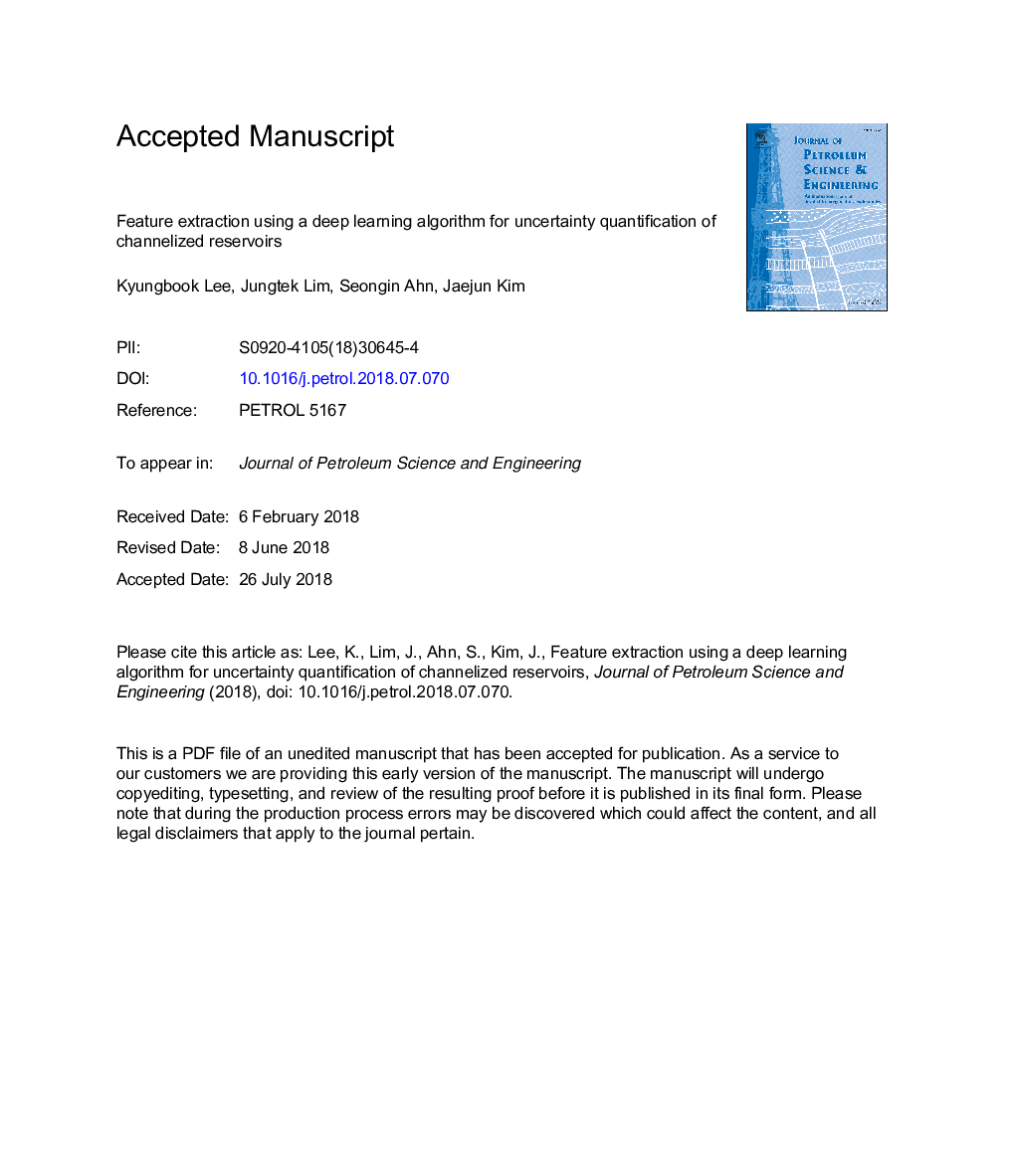| Article ID | Journal | Published Year | Pages | File Type |
|---|---|---|---|---|
| 8124374 | Journal of Petroleum Science and Engineering | 2018 | 39 Pages |
Abstract
In this research, after the main information from a reservoir model is extracted through a stacked autoencoder (SAE), which is one of deep learning algorithms, the 2-norm of feature vectors for two models is defined as the distance. First, the hyperparameters for SAE are analyzed by sensitivity analysis in order to optimize the feature vector from reservoir facies model. Similar to other artificial neural network algorithms, uncertainty results are sensitive to the number of neurons and the number of hidden layers but are stable for the number of clusters. After SAE-based clustering, only 20 representative models can realize the uncertainty range present in 800 individual initial models. If there are observed dynamic data, the best representative model can be determined by a misfit between the simulated production from the representative models and the observed data. The best model and its 9 closest models in feature space are selected as qualified models from among the entire 800 models. Additional reservoir simulations for the closest models can dramatically improve the uncertainty range of the prior models without inverse algorithms. The 10 qualified models can be utilized for generating pseudo-static data or can be used as initial models for inverse algorithms for further improvement of reservoir characterization.
Related Topics
Physical Sciences and Engineering
Earth and Planetary Sciences
Economic Geology
Authors
Kyungbook Lee, Jungtek Lim, Seongin Ahn, Jaejun Kim,
